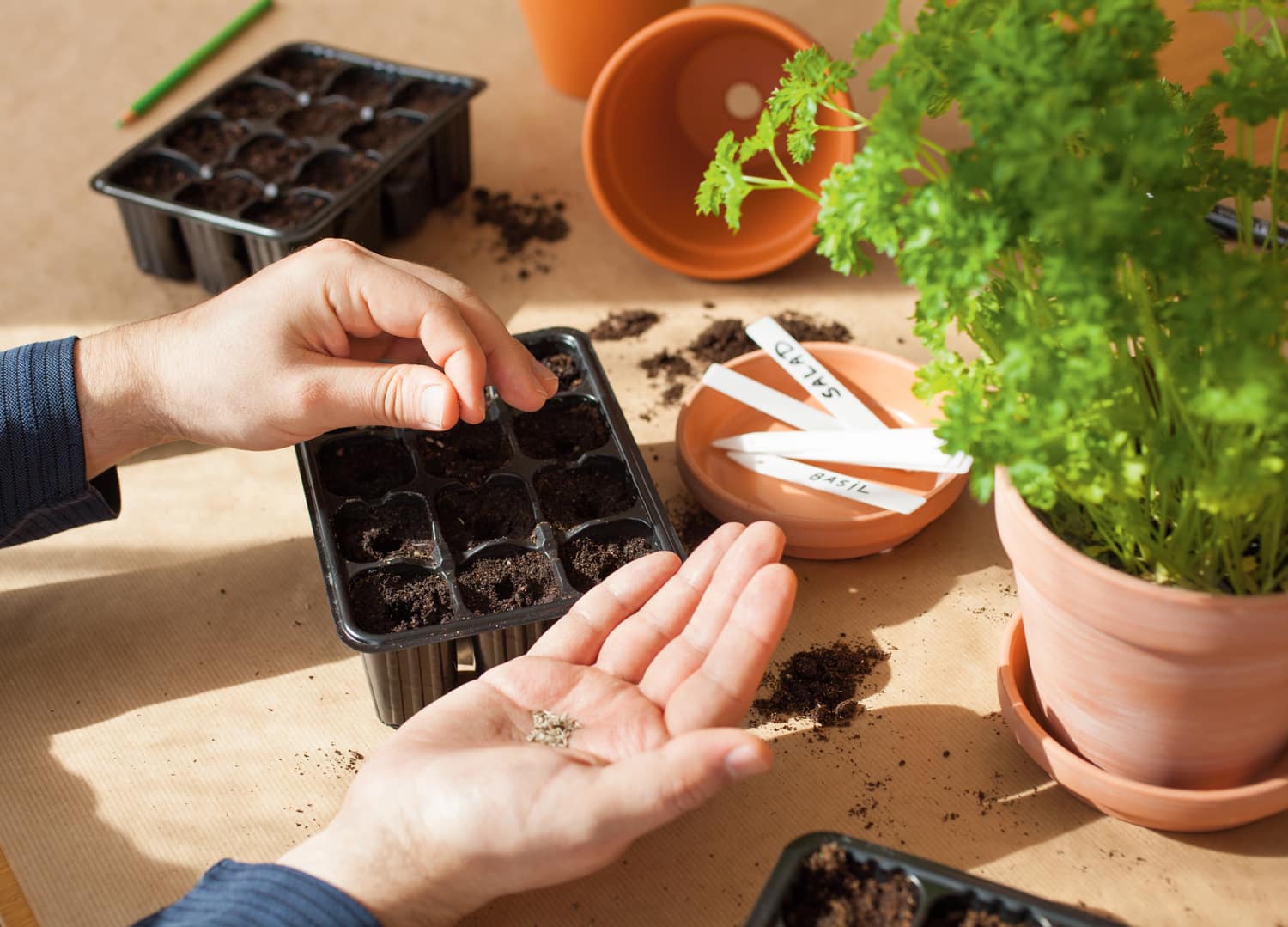Gardening
How to Grow Vegetables and Herbs Successfully?

Photography, iStock
Gardening
How to Grow Vegetables and Herbs Successfully?
If this is the summer you’re finally going to plant a veggie garden from seed, now’s the time to start planning. Whether you’re sowing directly into the ground or into a container, you can reap a delicious, healthy harvest of vegetables and herbs! Here’s how to grow them successfully.
Materials for Sowing Indoors
For indoor seedlings, purchase seed-starting mix and gather containers to plant in. These can be recycled plastic containers or grocery trays, dedicated plant pots and seed trays, propagating kits, or any other container that is at least 5 centimetres deep. Be sure to drill drainage holes in the bottom if the container lacks them.
Sowing Seeds Indoors
Consult the charts on the following pages to determine when to start sowing. Moisten the seed-starting mix and pour it into the pot.
Dig a small hole in the centre to the depth indicated in the chart and place two or three seeds in it. (It’s always best to sow extra seeds because the germination rate is never 100 percent.) Cover the seeds with soil and water gently. For some very small seeds, there is no need to dig a hole: just press them into the soil without covering them.

Photography, iStockphoto
Cover your seedling containers with a clear plastic dome and place them somewhere warm, but not yet in direct sunlight. After germination, which will vary in length depending on the type of plant, remove the dome and place the seedlings near a sunny window or under a grow light. Remove any excess seedlings, leaving only one per pot. Water gently whenever the soil begins to dry out—it should always remain at least somewhat moist.
When the seedlings have four to six leaves, begin fertilizing them with a water soluble all-purpose fertilizer at one-quarter the recommended strength.
When warmer weather arrives, acclimatize the seedlings to outdoor growing conditions: Give them two to three days in the shade, followed by two to three days in partial shade and, finally, two to three days in the sun. Transplant your seedlings into the ground or into a container according to the planting out date suggested in the chart.
Most seedlings can be planted at the same depth as they were growing in their original small pot; however, tomatoes can be planted deeper—cover the bare stems at their base in soil up to the lowest leaves. Choose to plant
in a location that has good sunlight and rich, well-drained soil. Water and fertilize regularly throughout the summer, and keep an eye out for pests and predators.
Sowing Seeds Outdoors
Consult the charts on the following pages before sowing outdoors. Some varieties germinate best in the cool temperatures of early spring, while others require the heat of summer, so your seeding will be spread out over time.
The day before planting your seeds, water the spot where they’ll be sown. As with indoor sowing, make small holes in the soil, placing the seeds according to the depth and the spacing seen in the chart. In each hole, sow two or three seeds, covering them with soil. Note that some seeds are to be sown on the surface of the soil—don’t cover those. Water gently afterward.

Photography, iStockphoto
After germination, continue to water regularly as soon as the soil begins to dry out. Remove excess seedlings, and keep only the strongest, healthiest ones in each location. During the summer, water and fertilize as needed...but, most of all, get ready to harvest a great crop!
Indoors or outdoors?
Many vegetables are sown directly in the ground, but some do benefit from a head start indoors. Our handy charts can help you determine which option to choose.
Where to find seeds

Photography, iStockphoto
A good selection of seeds can be found at any garden centre or your local hardware store. There are even more options available online.














Comments